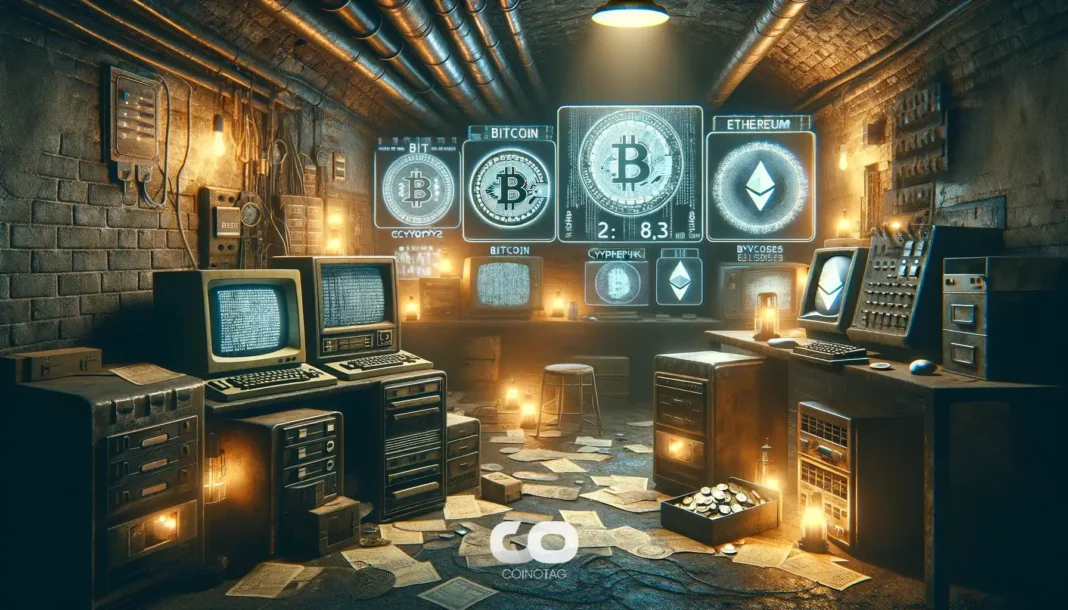| COINOTAG recommends • Exchange signup |
| 💹 Trade with pro tools |
| Fast execution, robust charts, clean risk controls. |
| 👉 Open account → |
| COINOTAG recommends • Exchange signup |
| 🚀 Smooth orders, clear control |
| Advanced order types and market depth in one view. |
| 👉 Create account → |
| COINOTAG recommends • Exchange signup |
| 📈 Clarity in volatile markets |
| Plan entries & exits, manage positions with discipline. |
| 👉 Sign up → |
| COINOTAG recommends • Exchange signup |
| ⚡ Speed, depth, reliability |
| Execute confidently when timing matters. |
| 👉 Open account → |
| COINOTAG recommends • Exchange signup |
| 🧭 A focused workflow for traders |
| Alerts, watchlists, and a repeatable process. |
| 👉 Get started → |
| COINOTAG recommends • Exchange signup |
| ✅ Data‑driven decisions |
| Focus on process—not noise. |
| 👉 Sign up → |
- South Korea’s financial regulator, the Financial Services Commission (FSC), has provided clarity in the crypto space.
- The FSC has issued guidelines concerning Qualified Intellectual Properties (NFTs).
- The FSC has declared that NFTs lacking distinguishing features will be categorized as ordinary cryptocurrencies.
South Korea’s New Crypto Guidelines for NFTs: A Detailed Breakdown.
FSC’s New Classification Guidelines for NFTs
The South Korean Financial Services Commission (FSC) recently released comprehensive guidelines for the classification of NFTs (Non-Fungible Tokens). According to these guidelines, NFTs that can be mass-produced, easily exchanged, and utilized for purchasing goods and services will be considered cryptocurrencies. In contrast, NFTs with limited economic utility or those that cannot be transferred will retain their standard NFT status.
Implications of the New Classification
By the FSC’s new definitions, if a digital token like a concert ticket is transformed into an NFT but can still be traded and used commercially, it will be treated as a cryptocurrency. For instance, a collection containing a million NFTs that are bought, sold, and used similarly to other cryptocurrencies falls under this new category. These distinctions emphasize that mass-produced and freely exchangeable NFTs will be treated with the same regulatory scrutiny as cryptocurrencies.
Upcoming Regulatory Changes and Implications
South Korea’s revamped crypto regulations are set to come into effect on July 19. These changes are part of the Virtual Asset User Protection Act, crafted to curb fraudulent activities in the crypto markets. Notably, the new regulation stipulates stringent measures for service providers, including keeping over 80% of customer funds in cold wallets to enhance security. Additionally, these entities are mandated to have insurance coverage to further protect user assets.
| COINOTAG recommends • Professional traders group |
| 💎 Join a professional trading community |
| Work with senior traders, research‑backed setups, and risk‑first frameworks. |
| 👉 Join the group → |
| COINOTAG recommends • Professional traders group |
| 📊 Transparent performance, real process |
| Spot strategies with documented months of triple‑digit runs during strong trends; futures plans use defined R:R and sizing. |
| 👉 Get access → |
| COINOTAG recommends • Professional traders group |
| 🧭 Research → Plan → Execute |
| Daily levels, watchlists, and post‑trade reviews to build consistency. |
| 👉 Join now → |
| COINOTAG recommends • Professional traders group |
| 🛡️ Risk comes first |
| Sizing methods, invalidation rules, and R‑multiples baked into every plan. |
| 👉 Start today → |
| COINOTAG recommends • Professional traders group |
| 🧠 Learn the “why” behind each trade |
| Live breakdowns, playbooks, and framework‑first education. |
| 👉 Join the group → |
| COINOTAG recommends • Professional traders group |
| 🚀 Insider • APEX • INNER CIRCLE |
| Choose the depth you need—tools, coaching, and member rooms. |
| 👉 Explore tiers → |
Focusing on User and Market Protection
The new regulations aim to shield users from market manipulation and fraudulent practices. By imposing these requirements, the FSC seeks to foster a safer trading environment. For instance, by necessitating that a significant portion of user deposits be held in cold storage, the regulation minimizes the risk of hacking and theft. Additionally, the requirement for mandatory insurance policies ensures that users are compensated in case of any unforeseen incidents.
Conclusion
South Korea’s updated crypto regulations reflect a proactive approach to the evolving digital asset landscape. By delineating clear classifications for NFTs and imposing stringent security measures, the FSC intends to protect users and maintain market integrity. As these guidelines take effect, market participants can expect a more secure and transparent trading environment, marking a significant step forward for the nation’s crypto framework.
| COINOTAG recommends • Exchange signup |
| 📈 Clear interface, precise orders |
| Sharp entries & exits with actionable alerts. |
| 👉 Create free account → |
| COINOTAG recommends • Exchange signup |
| 🧠 Smarter tools. Better decisions. |
| Depth analytics and risk features in one view. |
| 👉 Sign up → |
| COINOTAG recommends • Exchange signup |
| 🎯 Take control of entries & exits |
| Set alerts, define stops, execute consistently. |
| 👉 Open account → |
| COINOTAG recommends • Exchange signup |
| 🛠️ From idea to execution |
| Turn setups into plans with practical order types. |
| 👉 Join now → |
| COINOTAG recommends • Exchange signup |
| 📋 Trade your plan |
| Watchlists and routing that support focus. |
| 👉 Get started → |
| COINOTAG recommends • Exchange signup |
| 📊 Precision without the noise |
| Data‑first workflows for active traders. |
| 👉 Sign up → |
| COINOTAG recommends • Members‑only research |
| 📌 Curated setups, clearly explained |
| Entry, invalidation, targets, and R:R defined before execution. |
| 👉 Get access → |
| COINOTAG recommends • Members‑only research |
| 🧠 Data‑led decision making |
| Technical + flow + context synthesized into actionable plans. |
| 👉 Join now → |
| COINOTAG recommends • Members‑only research |
| 🧱 Consistency over hype |
| Repeatable rules, realistic expectations, and a calmer mindset. |
| 👉 Get access → |
| COINOTAG recommends • Members‑only research |
| 🕒 Patience is an edge |
| Wait for confirmation and manage risk with checklists. |
| 👉 Join now → |
| COINOTAG recommends • Members‑only research |
| 💼 Professional mentorship |
| Guidance from seasoned traders and structured feedback loops. |
| 👉 Get access → |
| COINOTAG recommends • Members‑only research |
| 🧮 Track • Review • Improve |
| Documented PnL tracking and post‑mortems to accelerate learning. |
| 👉 Join now → |







